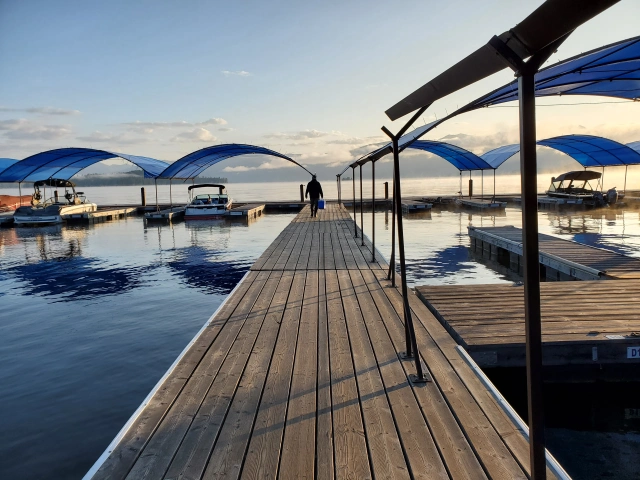Buy Your Aquatic Invasive Species Sticker
Aquatic invasive species (AIS) are a constant threat to our waterways. They impact the ecology of a waterbody, they are extremely expensive to manage once they invade, and they limit the recreational activities we covet here in the Inland Northwest. Prevention is the least expensive method for managing AIS, but in the Pend Oreille Basin we already have some invaders that require management to preserve our quality of life on the water.
Invasive organisms are typically non-native and have been introduced to a system that lacks the natural controls that existed in their home environment. The controlling factors in the native system could have been predators, a limiting nutrient or mineral, seasonal conditions, or something else. Without these controlling factors, invasive organisms will expand aggressively tending to form monocultures that reduce biodiversity and offer little benefit to their environment.
Lake Pend Oreille and the Pend Oreille River are infested with Eurasian watermilfoil, curly-leaf pondweed, and flowering rush. There is a population of Asian clams in Ellisport Bay and Sam Owen, which have the potential to expand or be transported via boat to other parts of the lake. There is also an invasive crayfish that has spread down from the Clark Fork River.

Curlyleaf pondweed has distinct lasagna looking leaves. It spreads by hardy seed pods called turions that fall off the plants early towards the middle of the summer.
Priest Lake has small infestations of Eurasian watermilfoil and curly-leaf pondweed. There is also a population of Chinese mystery snails which are typically released into aquatic ecosystems by dumping of aquariums. The Priest River substrate is covered in many areas with a diatom called didymo or rock snot. Didymo looks and feels like wet toilet paper. It is now believed that Didymo is a native organism that has begun to act aggressively in some circumstances.
The scariest of all known AIS threatening our region are zebra and quagga mussels. These organisms have not yet been found in any waters of the Columbia River system, but every year they are found in new waterbodies across the U.S. and we need to work diligently to keep them out of our waterways.

Flowering rush is a relatively new invader spreading down from Flathead Lake where it has been established for decades. This plant aggressively fills in bays where it becomes a huge navigation issue as it surfaces and forms a carpet in mid-summer. Flowering rush has a distinct triangular stem and a dense rhizome structure. New plants can grow from small pieces of rhizome which readily break off when disturbed.
Zebra and quagga mussels are freshwater bivalves that differ from native mussels because they attach to surfaces. None of the native mussels in our region attach to surfaces and it is this characteristic that makes zebra and quagga mussels such a nuisance. Their larvae, called veligers, are free-floating, microscopic and can be carried in water (or your bilge water) for up to eight weeks. They encrust hard surfaces causing severe and costly damage to hydropower facilities, water treatment plants, wastewater facilities, irrigation intakes, boats, and docks. They are filter feeders consuming the bottom of the food chain which can eventually devastate an entire fishery. They cover rocky beaches with their sharp shells and smell when they die and rot by the millions on the shoreline.
Zebra and quagga mussels first invaded the Great Lakes in the 1980s and their impacts continue to grow in unpredictable ways. They were first found in the west in 2007 at Lake Mead and since then have been found in many southwestern waterbodies. Each year hundreds of boats travel up from these southern lakes to our waters!
Don’t move a mussel!
The Commission works to provide aquatic invasive species information throughout the Basin aiding in the battle to keep our waterways free of new invaders. It is essential that we all work together to stop the spread of aquatic invasive species! Most of these species are spread through boats traveling from one waterbody to another. They can be attached to the boat, hanging off the boat, or even in the bilge or other standing water in a boat. Some invasive species can be microscopic and some can live for months out of the water. There are a number of things that you can do to help stop this spread.
- Clean, Drain and Dry your boat, trailer, fishing gear, life jackets, waders…
- Stop at the Boat Inspection Stations that are set up around Idaho and neighboring states.
- Spread the word! Tell your friends and people using our waters about aquatic invasive species and how they threaten our way of life.


